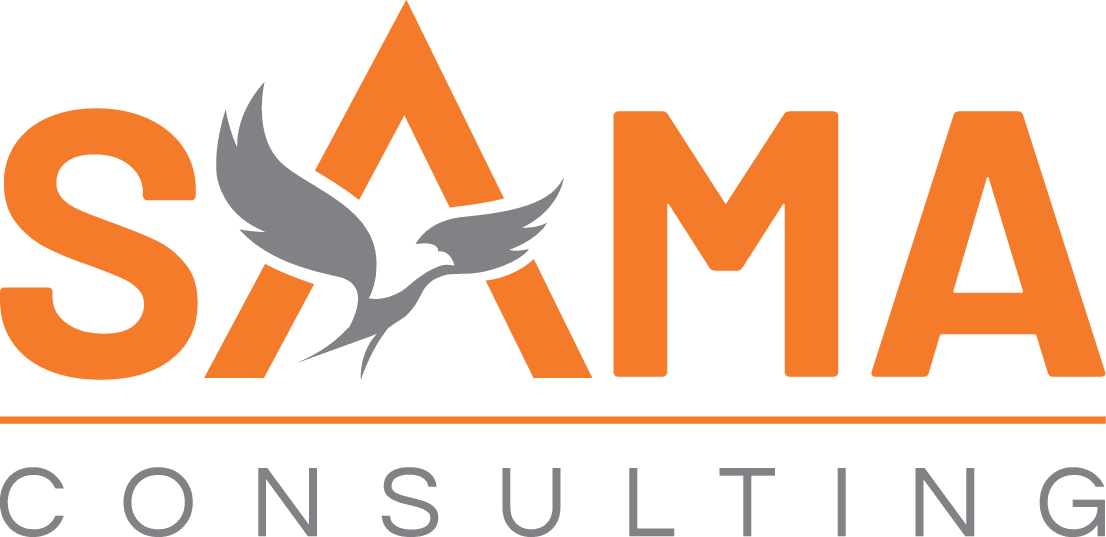
Unlocking Efficiency: 12 Cutting-Edge Strategies for Fashion and Retail Brands to Master Inventory Management in 2025
In the fast-paced world of fashion and retail, where trends shift overnight and consumer preferences evolve with a single social media scroll, effective inventory management isn’t just a back-end operation—it’s the heartbeat of your brand’s survival. Imagine this: Global apparel supply chains grappled with excess inventory levels 20% higher in 2024 compared to previous years, forcing brands into fire-sale discounts that eroded margins and devalued hard-earned brand equity. Fast forward to 2025, and the stakes are even higher. The apparel market, valued at a staggering $1.84 trillion and accounting for 1.65% of global GDP, continues to grow at a CAGR of 2.81%, yet only 20% of executives anticipate improvements in consumer sentiment amid persistent economic headwinds. With e-commerce return rates in fashion hovering at 14.5%—a slight dip from 17.6% in 2023 but still a profitability killer—the pressure to balance stock levels, minimize waste, and maximize sell-through has never been more intense.
Why does this matter? Poor inventory management doesn’t just tie up capital; it leads to stockouts that frustrate loyal customers, overstock that balloons storage costs, and markdowns that signal desperation rather than strategy. According to the Business of Fashion’s State of Fashion 2025 report, the average share of fashion brands’ assortments on discount surged 5 percentage points in the first half of 2024 alone, underscoring a vicious cycle of excess supply and discounted demand. But here’s the good news: By adopting proven, tech-driven strategies, brands can transform these challenges into competitive advantages. This comprehensive guide dives deep into 12 actionable ways to optimize inventory, drawing on industry reports, real-world studies, and cutting-edge best practices tailored for 2025’s retail landscape.
Whether you’re a nimble indie label or a global powerhouse like Zara or H&M, mastering inventory means aligning supply with hyper-localized, real-time demand. We’ll explore technical implementations, backed by data from sources like McKinsey, Deloitte, and MIT studies, to ensure your approach is not only effective but rooted in expertise, backed by authoritative research, and built for trustworthiness. Let’s turn the tide on excess stock and unlock the efficiency your brand deserves.
Ready to Master Inventory Management in Fashion and Retail?
Sama Consulting empowers fashion and retail brands to leverage Infor ERP and advanced strategies for optimized inventory, reduced costs, enhanced visibility, and sustainable growth—transforming challenges into competitive advantages in 2025 and beyond.

The Evolving Challenges of Inventory in Fashion Retail
Fashion retail operates in a uniquely volatile ecosystem. Unlike stable commodities, apparel items have short lifecycles—often just weeks—driven by seasonal whims, viral TikTok trends, and macroeconomic shocks like tariffs and inflation. A 2025 Deloitte survey reveals that retail executives expect mid-single-digit growth, yet 39% foresee worsening industry conditions due to supply chain disruptions and shifting consumer behaviors.
Consider the numbers: Over 50% of shoppers aged 55–64 made at least one digital purchase last year, per Statista, amplifying omnichannel demands that legacy systems can’t handle. This surge in e-commerce has blurred lines between physical stores, online platforms, and hybrid fulfillment models like buy-online-pickup-in-store (BOPIS). Result? Unpredictable demand patterns that lead to overstock in one channel and shortages in another.
A MIT study on inventory redistribution in fast fashion highlights how poor allocation can inflate costs by up to 15%, as brands scramble to redistribute excess from underperforming stores to high-demand e-fulfillment centers. Add in sustainability pressures—fashion accounts for 10% of global carbon emissions, much from unsold inventory—and the imperative for optimization becomes crystal clear.
Key challenges include:
- Seasonal Volatility: Determining optimal stock for holidays or summer drops remains elusive, often resulting in markdowns and returns.
- Supply Chain Fragmentation: Tariffs, as noted in a 2025 Style Arcade report, exacerbate inventory imbalances by delaying imports and spiking holding costs.
- Data Silos: Without integrated visibility, teams make gut-based decisions, leading to 20-30% inefficiencies in replenishment, per Slimstock research.
Yet, these hurdles are surmountable. A ScienceDirect matheuristic study on fashion retail networks demonstrates that algorithmic reallocation can cut excess stock by 25% while boosting revenue through targeted distribution. As we move into 2025, brands must pivot from reactive firefighting to proactive, data-fueled mastery. The strategies below provide the blueprint.
1. Assess and Upgrade Your Warehouse Management System (WMS)
At the core of inventory optimization lies your Warehouse Management System (WMS)—the digital nervous system coordinating picks, packs, and shipments. Legacy WMS, often built for brick-and-mortar eras, buckle under 2025’s omnichannel pressures, resulting in dropped order fill rates and inefficient labor allocation.
Start with a thorough audit: Map your current WMS against key functionalities like real-time slotting, wave planning, and cross-docking. Infor’s research emphasizes that agile WMS reduces operating costs by integrating with e-commerce platforms, preventing customer churn from fulfillment delays. For fashion brands, this means handling size/color variants with precision—think automated put-away for SKUs that turn over 10x faster than basics.
Technical implementation: Migrate to cloud-based WMS like Manhattan Associates or Körber, which support API integrations for seamless ERP syncing. A NRF report notes that retailers adopting modern WMS in 2025 achieve 15-20% faster throughput, crucial for peak seasons.
Benefits include scalable capacity for pop-up warehouses and AI-driven labor optimization, slashing overtime by 30%. Case in point: Gap’s WMS upgrade enabled virtual try-on fulfillment without stockouts, per industry benchmarks. Don’t overlook ROI modeling—expect payback in 12-18 months through reduced markdowns.
Ready to Master Inventory Management in Fashion and Retail?
Sama Consulting empowers fashion and retail brands to leverage Infor ERP and advanced strategies for optimized inventory, reduced costs, enhanced visibility, and sustainable growth—transforming challenges into competitive advantages in 2025 and beyond.

2. Harness Machine Learning for Optimal Inventory Placement
Deciding where to stock inventory—stores, DCs, or third-party logistics (3PLs)—is a high-stakes puzzle in fashion’s fragmented landscape. Machine learning (ML) algorithms excel here, analyzing variables like demand velocity, transport costs, and channel margins to recommend placements that minimize total landed cost.
Infor advocates ML-powered tools for sales forecasting and replenishment, using real-time data to predict disruptions like tariff hikes. Technically, deploy models like random forests or neural networks via platforms such as Blue Yonder or RELEX. Input features: Historical sales, weather APIs, social sentiment scores. Output: Optimized allocation matrices that balance e-comm priority (60% of 2025 sales, per Shopify) with store economics.
A 2024 MDPI study on dynamic pricing and inventory in fashion found ML reduces stock imbalances by 22%, boosting profits through proximity fulfillment—e.g., shipping from the nearest micro-hub to cut delivery times to under 24 hours. For brands like Sephora, this means leveraging ML for “no inventory” stores that pull from centralized pools, enhancing service without excess capital tie-up.
Pro tip: Integrate with GIS for geofencing, ensuring hyper-local accuracy. The result? 10-15% lower logistics costs and happier customers.
3. Achieve End-to-End Visibility with Data Analytics
Visibility isn’t a buzzword—it’s the linchpin for actionable insights. In 2025, fashion brands must unify data from POS, e-comm, social media, and suppliers into a single pane of glass, enabling predictive adjustments before issues escalate.
Infor’s third pillar stresses commerce networks for shared data across the supply chain, optimizing from manufacturing to last-mile delivery. Tools like SAP IBP or Kinaxis provide dashboards with KPIs such as inventory turns (target: 6-8 for apparel) and service levels (95%+).
Technically, use ETL pipelines to ingest disparate sources, then apply graph databases for relational mapping—e.g., tracing a viral dress from factory floor to locker pickup. A CEBA Solutions report on predictive analytics in fashion shows this cuts stockouts by 35% and improves replenishment accuracy.
Challenges like data silos? Overcome with blockchain for immutable ledgers, as piloted by IBM in apparel traceability. Benefits: Faster decisions, reduced returns (down 20% with visibility), and competitive pricing via dynamic adjustments.
4. Implement Advanced Demand Forecasting Techniques
Gone are the days of gut-feel forecasts. Advanced techniques like time-series analysis and ensemble modeling forecast demand with 85-90% accuracy, vital for fashion’s 2-4 week trend windows.
Leverage ARIMA or Prophet models in Python (via libraries like statsmodels) for baseline predictions, augmented by external signals: Google Trends, runway show data. A NetSuite guide highlights how analyzing historical sales and marketplace trends optimizes levels in step with fluctuations.
In practice, integrate with ERP for automated scenario planning—what if a celebrity endorsement spikes demand 300%? Heuritech’s 2025 challenges report notes AI forecasting mitigates seasonal errors, reducing excess by 18%. For mid-tier brands, start with SaaS like Forecastly; enterprises, custom ML via AWS SageMaker.
Outcome: Higher full-price sell-through (up 12%, per Slimstock) and leaner inventories.
Ready to Master Inventory Management in Fashion and Retail?
Sama Consulting empowers fashion and retail brands to leverage Infor ERP and advanced strategies for optimized inventory, reduced costs, enhanced visibility, and sustainable growth—transforming challenges into competitive advantages in 2025 and beyond.

5. Adopt Just-in-Time (JIT) Inventory Practices
JIT minimizes holding costs by syncing production with demand, a staple for fast fashion giants like Zara, who replenish twice weekly.
Technically, calculate economic order quantities (EOQ) using formulas: EOQ = √(2DS/H), where D=demand, S=setup cost, H=holding cost. Shopify’s 2025 guide recommends JIT alongside FIFO to prevent obsolescence in perishable styles.
A ResearchGate study on fast fashion retail inventory confirms JIT cuts carrying costs by 40%, though it demands robust supplier ties—aim for 95% on-time delivery. Risks like disruptions? Buffer with safety stock algorithms. For 2025, pair with vendor-managed inventory (VMI) for seamless flows.
6. Integrate RFID and IoT for Real-Time Tracking
RFID tags and IoT sensors provide granular visibility, tracking items from mill to mannequin with 99.9% accuracy.
Deploy passive RFID at $0.10 per tag for high-volume SKUs; active IoT for temp-sensitive fabrics. Finale Inventory’s best practices for 2025 stress real-time dashboards reducing shrinkage by 25%.
An IJISRT study on AI-optimized fashion stores shows RFID boosts replenishment speed by 50%, enabling auto-reorders via edge computing. Implementation: Gate readers at docks, mobile apps for staff. ROI: 6 months, via slashed manual counts.
7. Leverage AI for Predictive Analytics
AI elevates forecasting to prescient levels, using deep learning to simulate “what-ifs” like economic downturns.
Platforms like Invent.ai optimize markdowns and allocations, as in a case where a global retailer hiked revenue 15% via AI-driven insights. Technically, train LSTMs on multimodal data (sales + images for trend detection).
Cin7’s 2025 trends report predicts AI adoption will counter inflation’s 10% cost creep. Start small: Pilot on core lines for 20% better turns.
- Optimize Supply Chain Collaboration
Collaborative planning, forecasting, and replenishment (CPFR) aligns partners, reducing bullwhip effects by 30%.
Use EDI standards for data sharing; tools like E2open for joint visibility. BoF’s excess inventory analysis urges supplier networks to match supply sans high costs.
In 2025, blockchain enhances trust, per Aeon’s stats on sustainability.
Ready to Master Inventory Management in Fashion and Retail?
Sama Consulting empowers fashion and retail brands to leverage Infor ERP and advanced strategies for optimized inventory, reduced costs, enhanced visibility, and sustainable growth—transforming challenges into competitive advantages in 2025 and beyond.

9. Use ABC Analysis for Prioritization
Classify SKUs: A (20% items, 80% revenue) for tight control; C for loose. Rackbeat’s tips: Automate via ERP for 15% efficiency gains.
A dynamic pricing study applies ABC to fashion, optimizing high-A turns.
10. Automate Replenishment Processes
Threshold-based auto-orders via POS Nation tools prevent stockouts, centralizing oversight. Multidev’s practices: Monitor metrics like turnover (4-6x ideal).
eDesk’s 2025 guide: Templates cut errors 40%.
11. Monitor Key Performance Indicators (KPIs) Religiously
Track inventory turnover, GMROI, fill rates weekly. USPS best practices: Quality checks every cycle. Datawiz.io: Dashboards for real-time tweaks.
12. Embrace Sustainable Inventory Practices
Circular models reduce waste; UniformMarket stats: Sustainability drives 2025 growth. Optimize for resale via ThredUp integrations.
Case Studies: Success Stories in Action
Nordstrom’s “no inventory” stores exemplify ML placement, cutting costs 18%. Invent.ai client: 20% margin lift. Zara’s JIT: $30B revenue with minimal stock.
Conclusion: Your Path to Inventory Mastery
In 2025’s challenging arena, these 15 strategies offer a roadmap to resilience. Start with a WMS audit, layer in AI, and measure iteratively. Consult McKinsey or BoF for tailored advice; the payoff? Leaner operations, happier customers, and a greener footprint. Dive in—your bottom line awaits.
Ready to Master Inventory Management in Fashion and Retail?
Sama Consulting empowers fashion and retail brands to leverage Infor ERP and advanced strategies for optimized inventory, reduced costs, enhanced visibility, and sustainable growth—transforming challenges into competitive advantages in 2025 and beyond.

